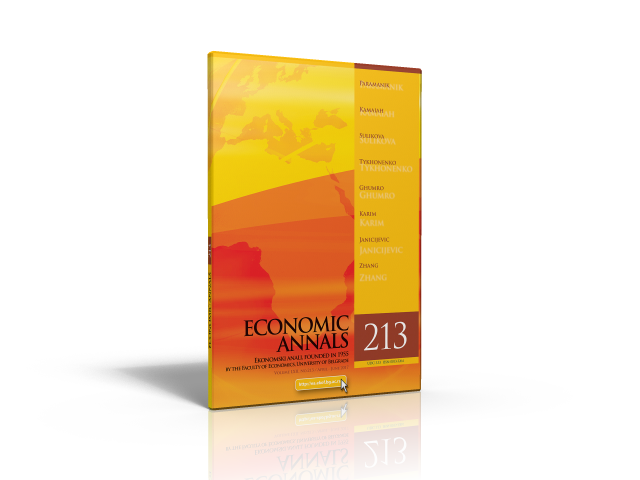THE ROLE OF REMITTANCES IN THE STABILITY OF MONEY DEMAND IN PAKISTAN: A COINTEGRATION ANALYSIS
##plugins.themes.bootstrap3.article.main##
##plugins.themes.bootstrap3.article.sidebar##
Niaz Hussain Ghumro
Mohd Zaini Abd Karim
Mohd Zaini Abd Karim
Abstract
The paper examines the dynamic relationship between the series of monetary aggregates M1 and M2 for the period 1972–2014. M1 and M2 are the dependent variables, while the explanatory variables are real income, discount rate, inflation rate, real exchange rate, and remittances. The ARDL bounds testing approach to cointegration is used to investigate the existence of long-run and short-run effects of remittances on monetary aggregates. The results show that remittances exert only positive effects on real narrow money demand in the end, suggesting that in Pakistan remittances are used for the purpose of consumption. Both money demand functions are stable in Pakistan, but the longrun effect of M1 remittances is a faster speed of adjustment to equilibrium (26.2%) than M2 remittances (21.3%). It is recommended that M1 be used as a monetary tool in Pakistan.
##plugins.themes.bootstrap3.article.details##
Keywords
Remittances, Money Demand, Stability, ADF, ARDL, Error Correction Model.
JEL Classification
E4, E5, E52, F41, G, G2
Issue
Section
Articles
How to Cite
Hussain Ghumro, N., & Zaini Abd Karim, M. (2017). THE ROLE OF REMITTANCES IN THE STABILITY OF MONEY DEMAND IN PAKISTAN: A COINTEGRATION ANALYSIS. Economic Annals, 62(213), 45-66. https://doi.org/10.2298/EKA1713045G
How to Cite
Hussain Ghumro, N., & Zaini Abd Karim, M. (2017). THE ROLE OF REMITTANCES IN THE STABILITY OF MONEY DEMAND IN PAKISTAN: A COINTEGRATION ANALYSIS. Economic Annals, 62(213), 45-66. https://doi.org/10.2298/EKA1713045G

